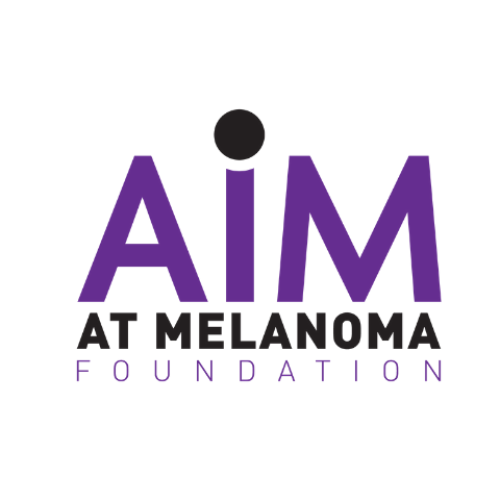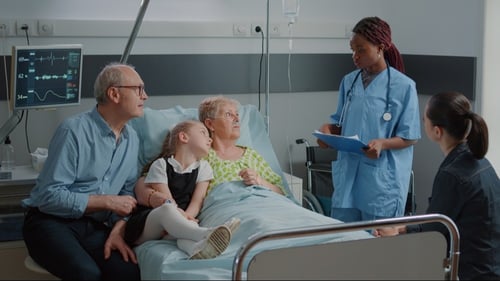Melanoma: Treatment Options
Treatment for Melanoma
Every treatment has potential risks and side effects. Before any new treatment or surgery, make sure your healthcare team tells you about what to expect.
Most melanoma is treated with one or more of the following treatments:
Surgery for melanoma
Surgery is usually the main treatment for melanoma.
- Wide excision surgery, removing additional tissue around the cancer is used for melanomas that are thicker.
- Sentinel lymph node mapping is used during surgery to check if the cancer has spread to nearby . The surgeon injecting substance known as a tracer near the tumor to find the sentinel lymph node or nodes. These are the nodes the cancer is most likely to spread to first.
- If cancer is found, the in that area will be removed.
- If cancer is not found, the rest of the are left in place.
Depending on the size and location of the melanoma, surgery may require only a local numbing medicine or general anesthesia.
How is used to treat melanoma?
Immunotherapies are cancer treatments that help the body’s immune system detect and attack cancer cells. Two types of immunotherapies are commonly used to treat melanoma:
Immune checkpoint inhibitors
Immune checkpoint inhibitors are a type of used to treat several types of cancer, including melanoma. Some cancer cells can switch off the immune system. Immune checkpoint inhibitors are drugs that prevent this from happening. This allows the immune system to find, unmask and destroy cancer cells. Immune checkpoint inhibitors are used to treat some 2 or higher melanoma. These include:
- Keytruda (pembrolizumab)
- Opdivo (nivolumab)
- Tecentriq (atezolizumab)
- Yervoy (ipilumumab)
Imlygic - a modified virus
Imlygic (talimogene laherparepvec or T-VEC therapy) is a genetically engineered virus that is used to treat recurrent or advanced melanoma. The medication is injected directly into the tumor to stimulate an immune response.
How is used to treat melanoma?
is a type of cancer treatment designed to attack or kill cancer cells, while sparing normal cells as much as possible. They target abnormal proteins, receptors or genes that are found in cancer cells or the surrounding tissue. Targeted therapies are used to treat some advanced ( 3 or 4) melanomas. These include:
- BRAF inhibitors
- BRAF inhibitors are oral medications that help slow down tumor growth in patients with advanced or recurrent melanoma that test positive for the tumor called a BRAF V600 mutation.
- About half of all melanomas have a tumor mutation in the BRAF gene.
- If your melanoma has a BRAF mutation often you will be treated with both a BRAF inhibitor and a MEK inhibitor. Combining these drugs often works better than either one alone.
- BRAF inhibitors include:
- Tafinlar (dabrafenib)
- Braftovi (encorafenib)
- Zelboraf (vemurafenib)
- MEK inhibitors
- MEK inhibitors are oral medications that are given alone or in combination with a BRAF inhibitor to treat melanoma in people with a BRAF V600 mutation.
- MEK inhibitors include:
- Mekinist (trametinib)
- Cotellic (cobimetinib)
- Mektovi (binimetinib)
How is radiation therapy used to treat melanoma?
Radiation therapy is used in certain circumstances. Most people with melanoma will not receive radiation therapy.
- Radiation might be used after surgery (known as therapy) if there’s a high risk that the melanoma might come back. Radiation may be given to the area where the melanoma was removed or to area where were removed, especially if melanoma was found in the .
- Radiation might be used to treat melanoma that has come back after surgery, either in the skin or , or to help treat distant spread of the disease.
- In melanoma, radiation may be used to relieve symptoms that occur when the cancer has spread to the brain or the bones.
Chemotherapy
Chemotherapy is not typically used to treat melanoma. It may be used to treat advanced melanomas that returned after treatment with or . Chemotherapy for melanoma may include one or a combination of these medications:
- Dacarbazine (DTIC)
- Temozolomide (an oral form af dacarbazine)
- Paclitaxel or doxetaxel
- Cisplatin or carboplatin
Treatment side effects
Your healthcare team should explain what you should expect from all treatments, including:
- all of the possible risks and side effects of each treatment.
- which side effects may be serious and how to tell.
- when and who you should call if you experience a side effect.
- what can be done to treat or alleviate each side effect.
Make sure you let your healthcare team know if you experience any side effects of your treatment. For more information about possible treatment side effects, see our section on Cancer Treatment by Treatment Type.
In the News
Topic : Experts call for early palliative care for cancer patients
People with cancer need support and care not only at the end of life but from the time of diagnosis. At the 2024 American Society of Clinical Oncology (ASCO) annual meeting, the organization’s president urged...
Guideline : Guidelines on exercise, diet, and weight during cancer treatment
Most professional guidelines on exercise, diet and weight management have focused on the health of the general population and cancer survivors. The American Society of...
Study : Physical activity may decrease fatigue associated with cancer treatment
Many cancer survivors experience fatigue during and after they complete treatment. This study looked at the effect of home-based physical activity on fatigue in cancer...
Study : The hidden financial burden of treating cancer care symptoms
Drugs commonly used to treat symptoms of cancer and cancer treatment side effects can cost thousands of dollars out of pocket for patients, depending on...
Learn from Other Experts

NCCN Patient Guidelines for Melanoma

|
Name of Drug |
Cancer |
Indication |
|
Type of Agent |
|
Braftovi |
Unresectable or melanoma |
Combined with Mektovi (binimetinib), for the treatment of people with unresectable or melanoma |
BRAF V600E or V600K tumor mutation |
BRAF inhibitor (type of kinase inhibitor) |
|
Cotellic (cobimetinib) |
Unresectable or melanoma |
Combined with Zelboraf (vemurafenib) for the treatment of people with unresectable or melanoma |
BRAF V600E or V600K tumor mutation |
BRAF inhibitor (type of kinase inhibitor) |
|
Mekinist (trametinib) |
Unresectable or melanoma |
As a single agent and in combination with dabrafenib for the treatment of unresectable or melanoma |
BRAF V600E or V600K tumor mutation |
MEK inhibitor (type of kinase inhibitor) |
|
Mekinist (trametinib) |
Lymph node positive |
Combined with Taflinar (dabrafenib) as treatment of people with melanoma and involvement of lymph node(s), following complete resection |
BRAF V600E or V600K tumor mutation |
MEK inhibitor (type of kinase inhibitor) |
|
Mektovi (binimetinib) |
Unresectable or melanoma |
Combined with Braftovi (encorafenib), for the treatment of people with unresectable or melanoma |
BRAF V600E or V600K tumor mutation |
MEK inhibitor (type of kinase inhibitor) |
|
Tafinlar |
Unresectable or melanoma |
Combined with Mekinist (trametinib) for the treatment of people with unresectable or melanoma |
BRAF V600E or V600K tumor mutation |
BRAF inhibitor (type of kinase inhibitor) |
|
Tafinlar |
Lymph node positive |
Combined with Mekinist (trametinib) as treatment of people with melanoma and involvement of lymph node(s), following complete resection
|
BRAF V600E or V600K tumor mutation |
BRAF inhibitor (type of kinase inhibitor) |
|
Zelboraf (vemurafenib) |
Unresectable or melanoma |
Combined with Tecentriq (atezolizumab) and Cotellic (cobimetinib) in people with melanoma that has the BRAF gene mutation, when the cancer can’t be removed by surgery or has spread to other parts of the body |
BRAF V600E or V600K tumor mutation |
BRAF inhibitor (type of kinase inhibitor) |
|
Tecentriq (atezolizumab) |
or unresectable melanoma |
Combined with Cotellic and Zelboraf in people with melanoma that has the BRAF gene mutation, when the cancer can’t be removed by surgery or has spread to other parts of the body |
BRAF V600E or V600K tumor mutation |
Type of known as an immune checkpoint inhibitor |
|
Keytruda (pembrolizumab) |
or unresectable melanoma |
For the treatment of people with melanoma |
No required |
Type of known as an immune checkpoint inhibitor |
|
Opdivo (nivolumab) |
or unresectable melanoma |
As a single agent or combined with ipilimumab |
No required |
Type of known as an immune checkpoint inhibitor |
|
Opdivo (nivolumab) |
or lymph node positive melanoma |
For the treatment of people with following complete removal of the cancer |
No required |
Type of known as an immune checkpoint inhibitor |
|
Yervoy (ipilumumab) |
or unresectable melanoma |
For the treatment of people with melanoma |
No required |
Type of known as an immune checkpoint inhibitor |
|
Yervoy (ipilumumab) |
Lymph node positive melanoma |
treatment of people with cutaneous melanoma with spread to regional of more than 1 mm who have undergone complete removal of the cancer and |
No required |
Type of known as an immune checkpoint inhibitor |
|
Imlygic (T-VEC or talimogene laherparepvec) |
Unresectable recurrent melanoma |
For local treatment of cutaneous, subcutaneous, and lymph node lesions in people with melanoma that came back after initial surgery |
No required |
Cancer vaccine |



